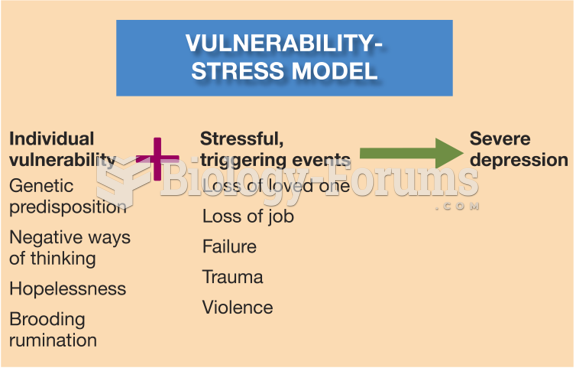Answer to Question 1
There are several cognitive models of the etiology of depression. One model is based on the work of Aaron Beck who suggests that people develop, through the course of their lives, habitual ways of looking at the world and themselves. These cognitive patterns determine how they interpret and react to life events. Some patterns, or habitual ways of thinking and perceiving, make an individual more vulnerable to depression. From this perspective, persistent negative or pessimistic thoughts would be such a vulnerability. Various types of distortions, errors or biases in thinking or perceiving, such as a tendency to assign a global, personal meaning to negative experiences, would be conducive to depression. There are several cognitive distortions that could be mentioned here including a tendency to overgeneralize negative conclusions from one negative experience, a tendency to draw arbitrary inferences about one's self without evidence, and a tendency to exaggerate any negative experience. Mention should be made of Beck's concept of schema, which is a cognitive term for the collection of assumptions, attributions, and ways of perceiving that guide ones cognitive habits or tendencies.
Answer to Question 2
Although people mistakenly identify depression with the elderly, data from the NCS-R suggest that mood disorders actually are more frequent among young and middle-aged adults. The rates of both major depression and bipolar mood disorder are lowest among people over age 60. Several explanations have been offered for this pattern. It is possible that this finding is due to how the research was conducted, not actual differences in the rate of depression across age groups. One interpretation is that the elderly have greater difficulty remembering episodes of depression. In addition, mood disorders are associated with increased mortality; thus, some severely depressed people might not have survived into old age. However, the pattern observed in the NCS-R has been observed in several studies, and most investigators believe the effect (lower rates of depression among the elderly) is genuine.







